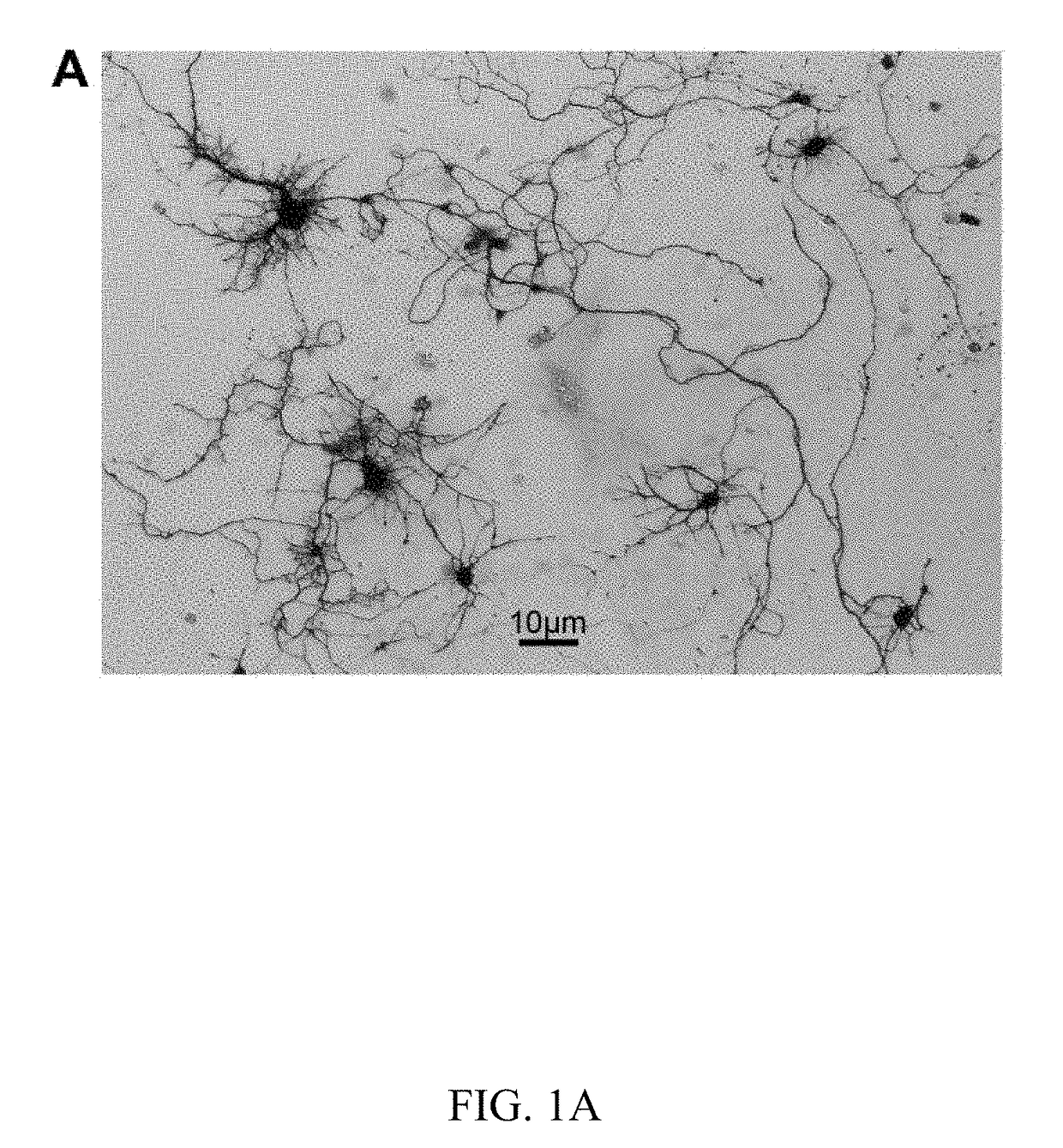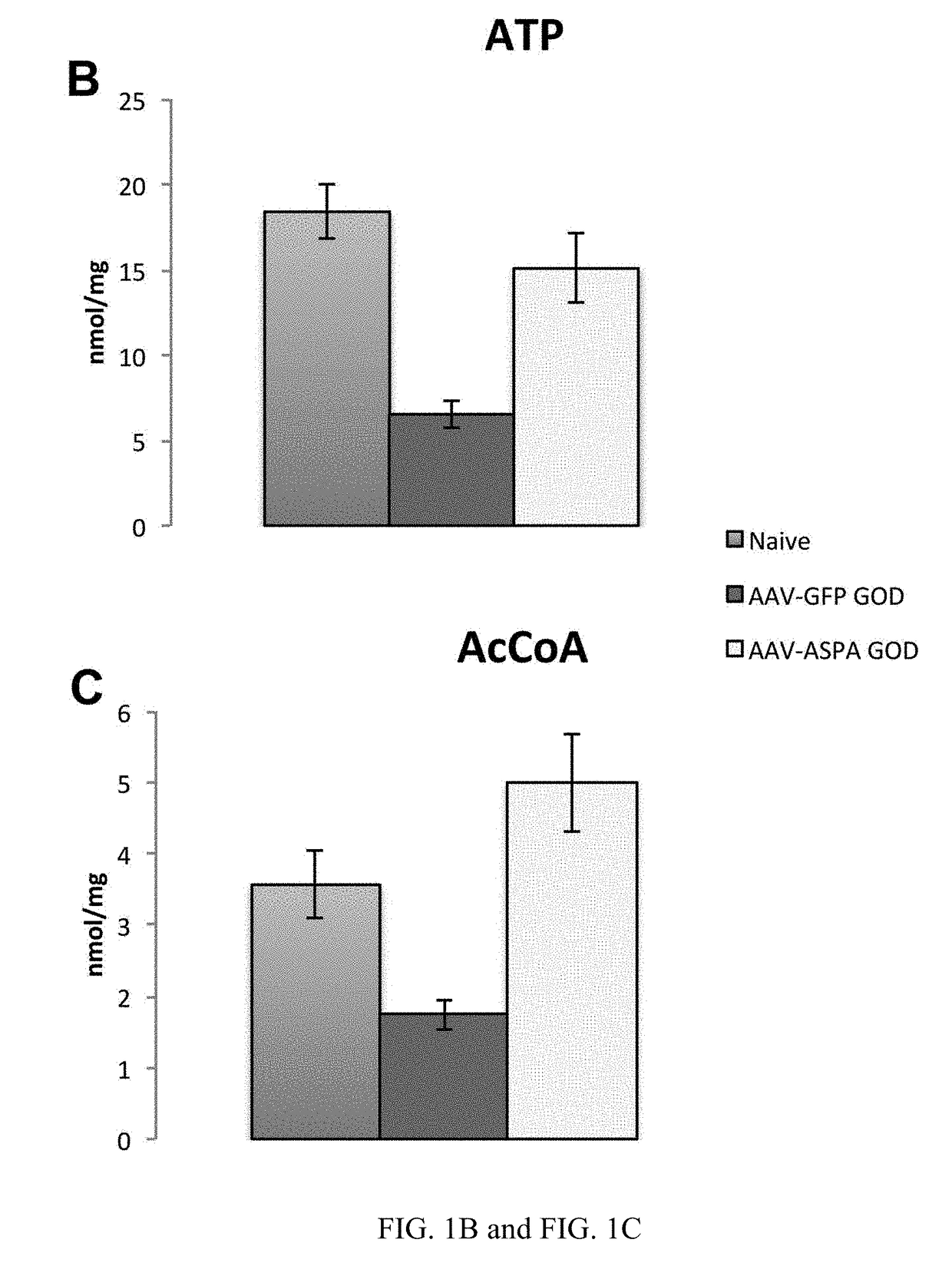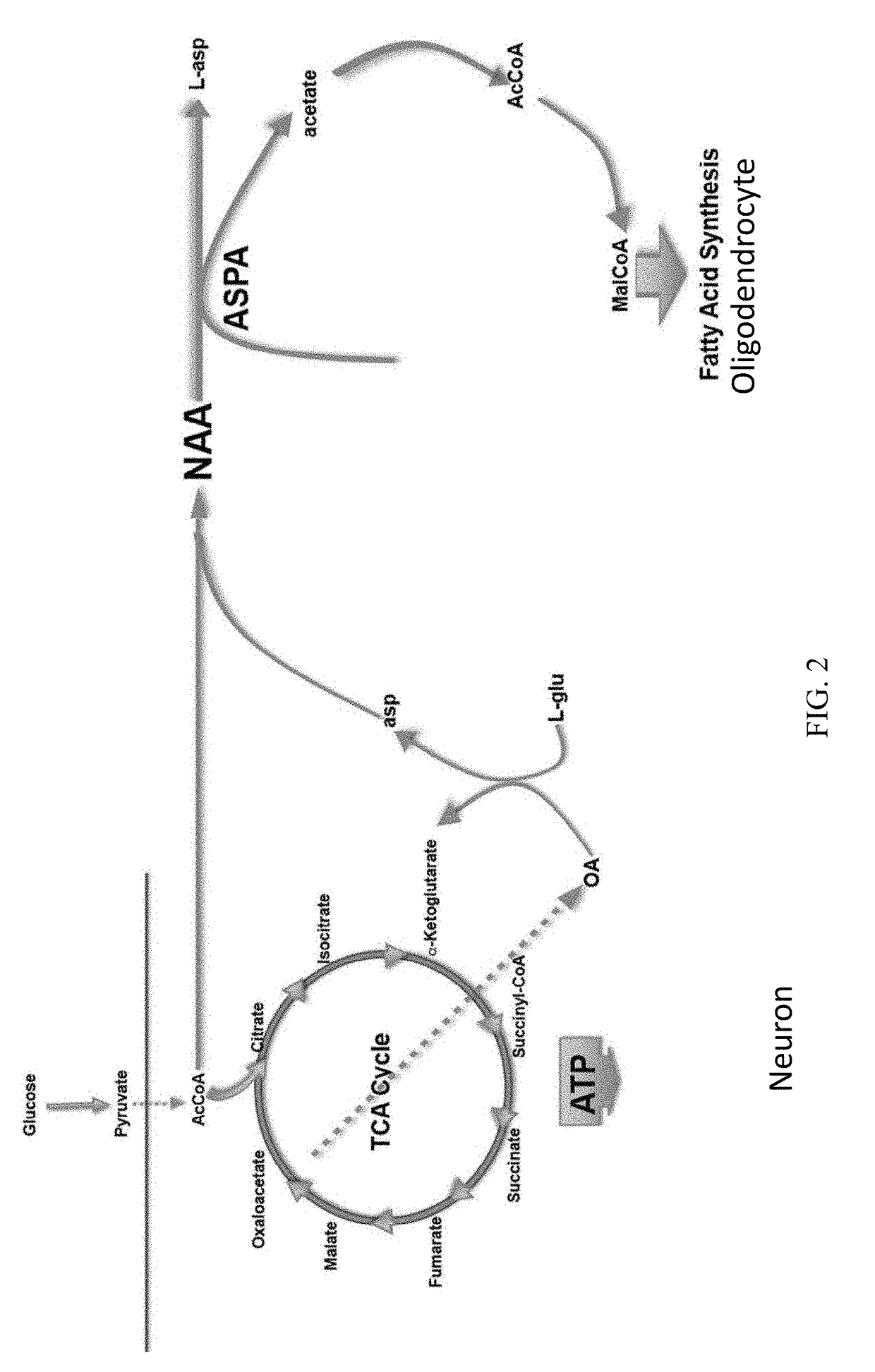Metabolic therapy for oxidative stress in the brain through targeted neuronal catabolism of n-acetyl-aspartic acid
a technology of nacetyl-aspartic acid and neuronal catabolism, which is applied in the direction of peptide/protein ingredients, enzymology, viruses/bacteriophages, etc., can solve the problems of reducing the catabolism rate of naa, affecting the fundamental aspects of brain function, and consuming a lot of energy. , to achieve the effect of reducing energy deficiency and increasing the catabolism rate o
- Summary
- Abstract
- Description
- Claims
- Application Information
AI Technical Summary
Benefits of technology
Problems solved by technology
Method used
Image
Examples
examples
[0072]It should be appreciated that the invention should not be construed to be limited to the examples that are now described; rather, the invention should be construed to include any and all applications provided herein and all equivalent variations within the skill of the ordinary artisan.
[0073]1. Improved Oxidative Integrity in 5×FAD Mice Treated with AAV-ASPA
[0074]The 5×FAD mouse is a model of inherited AD. It contains 5 mutations in genes found clinically that result in the accumulation of B-amyloid fragments in the brain. This animal manifests 13-42 amyloid-positive plaques in the brain and an associated learning deficit from approximately 4 months of age onwards. This learning deficit can be assayed for by the use of a maze apparatus that measures spatial working memory.
[0075]5×FAD mice were injected with AAV-ASPA at 6 weeks of age, and brains analyzed for ASPA activity (i.e., lowered endogenous NAA) and markers of oxidative stress at 4 months of age (FIGS. 4A-4C). Expressio...
PUM
| Property | Measurement | Unit |
|---|---|---|
| concentration | aaaaa | aaaaa |
| nucleic acid | aaaaa | aaaaa |
| oxidative stress | aaaaa | aaaaa |
Abstract
Description
Claims
Application Information
 Login to View More
Login to View More - R&D
- Intellectual Property
- Life Sciences
- Materials
- Tech Scout
- Unparalleled Data Quality
- Higher Quality Content
- 60% Fewer Hallucinations
Browse by: Latest US Patents, China's latest patents, Technical Efficacy Thesaurus, Application Domain, Technology Topic, Popular Technical Reports.
© 2025 PatSnap. All rights reserved.Legal|Privacy policy|Modern Slavery Act Transparency Statement|Sitemap|About US| Contact US: help@patsnap.com



